Turf grass lawns were once the pride and joy of suburban neighborhoods, but they have a relatively short history in terms of gardening. Grass lawns were first popularized among the European aristocrats of the 17th century and quickly became indicators of status. However, in recent years, there has been a shift away from turf grass and towards more sustainable lawn alternatives.
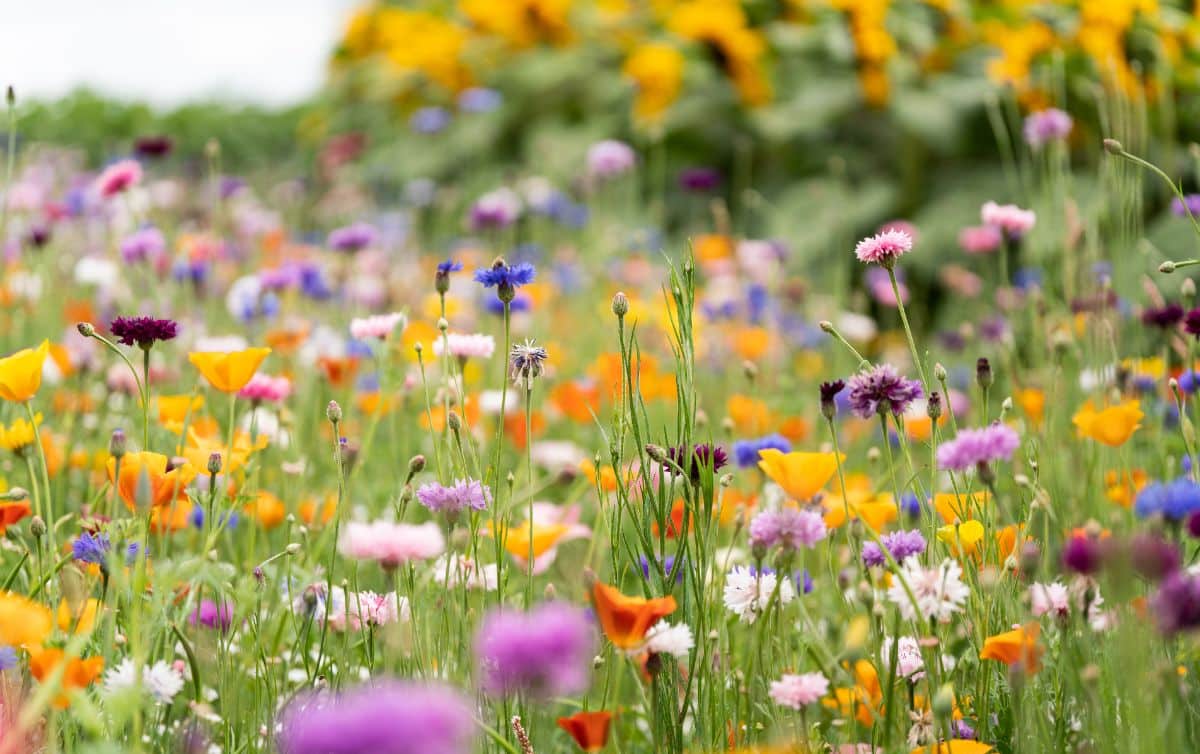
Grass lawns require a great deal of care and resources. Grass has high watering needs compared to other lawn options and needs to be watered regularly. Grass lawns also require frequent mowing and are often sprayed with chemical pesticides, herbicides, and synthetic fertilizers to maintain their uniformly green appearance.
However, all of these demands mean that grass lawns aren’t exactly environmentally friendly. What’s more, as a monoculture, they do little to nothing to support pollinators and other wildlife.
Luckily, there are plenty of other creative, colorful, and eco-friendly lawns to try instead. These alternate lawn coverings usually require minimal watering and other maintenance and can even provide a healthful habitat for bees and other pollinators.
In the list below, we’ll explore some of the top eco-friendly lawn coverings and what makes each stand out.
Jump to:
- Best eco-friendly grass lawn alternatives
- 1. Clover lawns
- 2. Groundcovers
- 3. Lily of the valley
- 4. Sweet woodruff
- 5. Creeping thyme
- 6. Pachysandra
- 7. Creeping Jenny
- 8. Stonecrops
- 9. Corsican mint
- 10. Moss
- 11. Native perennials
- 12. Ornamental grasses
- 13. Rock gardens
- 14. Vegetables
- Frequently asked questions
- Summary
Best eco-friendly grass lawn alternatives
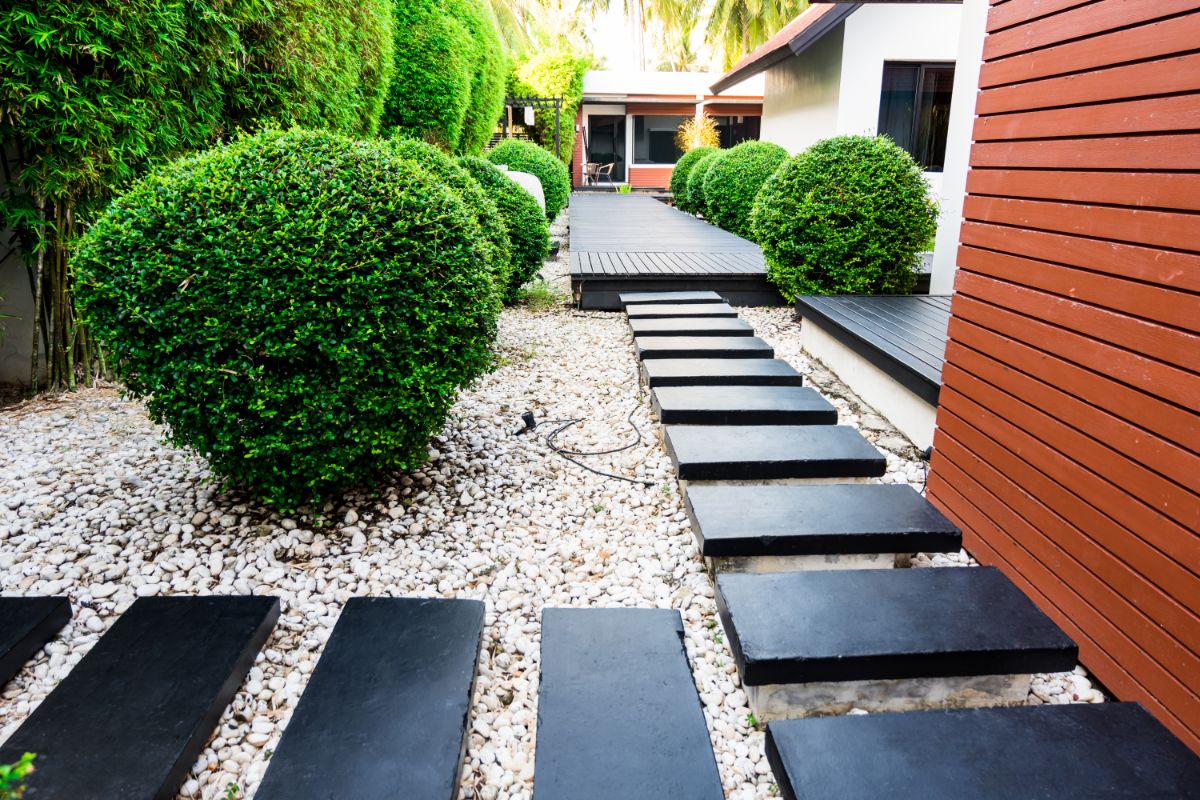
From classic clover lawns to funky rock gardens and mossy landscapes, there are plenty of other options besides grass that will liven up your lawn and improve your home’s curb appeal. Here are some of our top picks for the best sustainable grass lawn alternatives.
1. Clover lawns
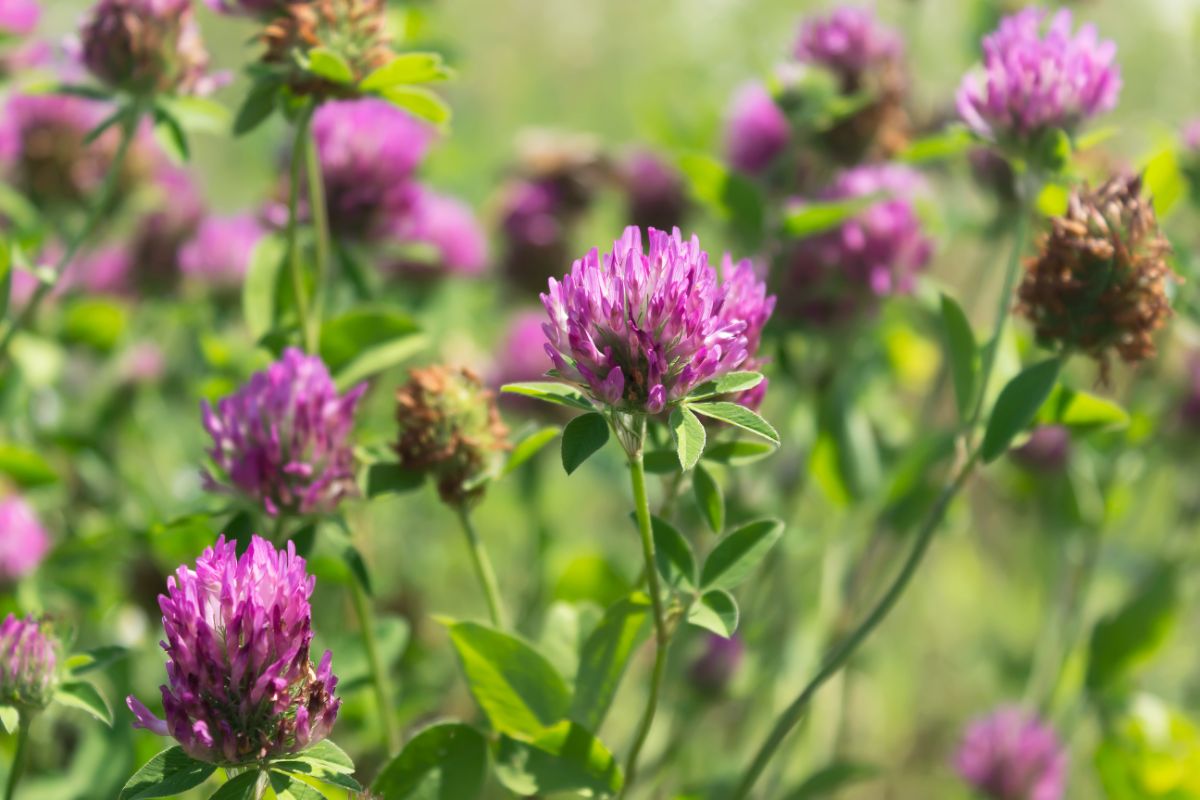
| Type: | Clover lawn |
| Sun or shade? | Full sun to part shade |
| Drought tolerant? | Yes |
| Pollinator friendly? | Yes |
| Other benefits? | Improves soil due to nitrogen-fixing abilities; weed suppression; does not require fertilizer; may decrease deer activity in nearby vegetable and flower beds. |
Clover is a grass alternative that has been gaining popularity rapidly in recent years. And it’s no wonder why.
Unlike grass lawns, clover lawns require minimal care and don’t need nearly as much water. Additionally, they don’t need to be fertilized because clover naturally fixes nitrogen into the soil and the plant’s dense growth habit eliminates the need for toxic herbicides. That means that clover lawns aren’t just attractive; they’re also eco-friendly!
Grass lawns are monocultures that don’t contribute much to biological diversity or support pollinator health. Clover lawns, on the other hand, bloom a profusion of nectar- and pollen-rich flowers, which bees and other pollinators love. So, if you want to help bees make a comeback, try planting a clover lawn.
Dutch white clover is the most common type of clover used for lawn seeding; however, crimson and red clover are other popular varieties. For a quick fix, you can simply overseed an existing grass lawn with clover seeds, or you can remove your grass lawn and start from scratch with clover.
And if you need more reasons to try out clover in your space, clover lawns also help prevent pest damage from deer and rabbits in your veggie garden. This is because backyard visitors often prefer to munch on sweet clover instead of your garden produce.
2. Groundcovers
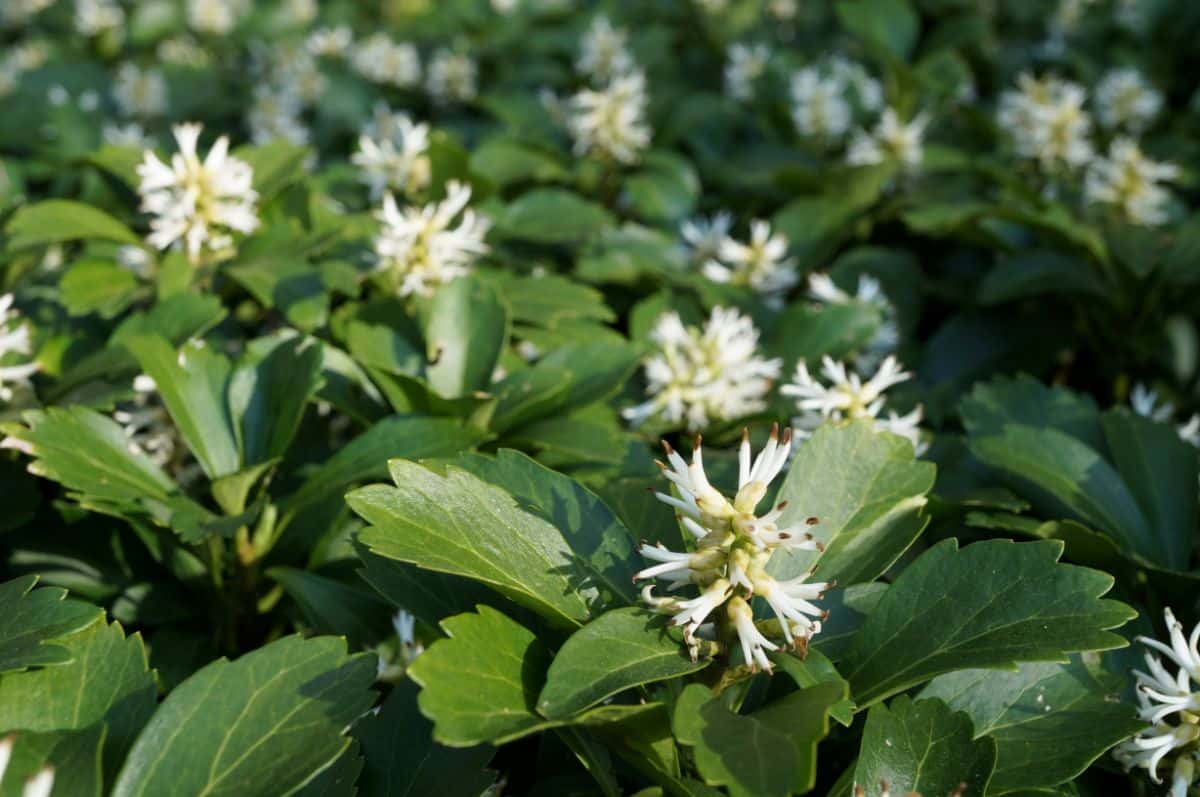
| Type: | Groundcovers |
| Sun or shade? | Depends on species |
| Drought tolerant? | Depends on species |
| Pollinator friendly? | Depends on species |
| Other benefits? | Most groundcover types are more drought tolerant than standard turf grass. |
There are a wide variety of groundcovers that are very low maintenance and spread easily, making them the perfect solution for an alternative lawn. Growing low to the ground, groundcovers are usually quite dense, making them naturally weed-resistant. They don’t need to be mowed either, and if you choose one that’s well-adapted to your growing season and the available light in your garden, they should be quite easy to care for.
Some groundcovers, like drought-tolerant lantana, are ideal for areas that receive minimal rainfall. While other ground coverings, like the Japanese sweet flag, provide lots of movement and fun forms. Below are some other top choices for groundcovers that will make you wish you’d transitioned away from lackluster turf grass ages ago.
3. Lily of the valley
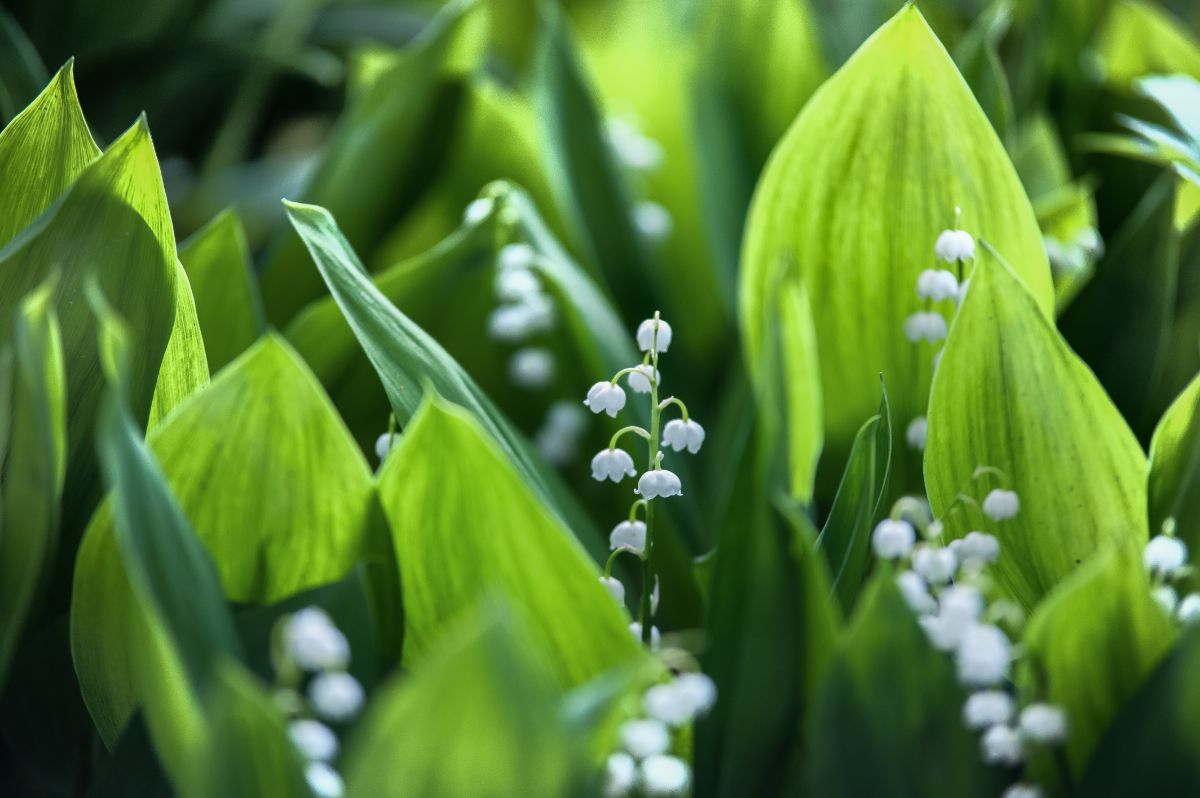
| Type: | Lily of the valley |
| Sun or shade? | Both |
| Drought tolerant? | Yes |
| Pollinator friendly? | Yes |
| Other benefits? | Fragrant flowers; bright autumn berries for added color; dense growth naturally suppresses weeds; deer resistant. |
Lily of the valley is a classic, spring-blooming flower that is naturally very drought resistant and grows well in shadier locations. As a groundcover, you don’t want to walk on it, but it grows so thickly together that it naturally suppresses most weeds. It also spreads rapidly and will fill in any unplanted spots in your garden in no time.
Known for its sweet-smelling, white, bell-shaped flowers, the lily of the valley has glossy, lance-shaped leaves. In fall, this groundcover will produce an even more delightful color in the form of bright red berries.
4. Sweet woodruff
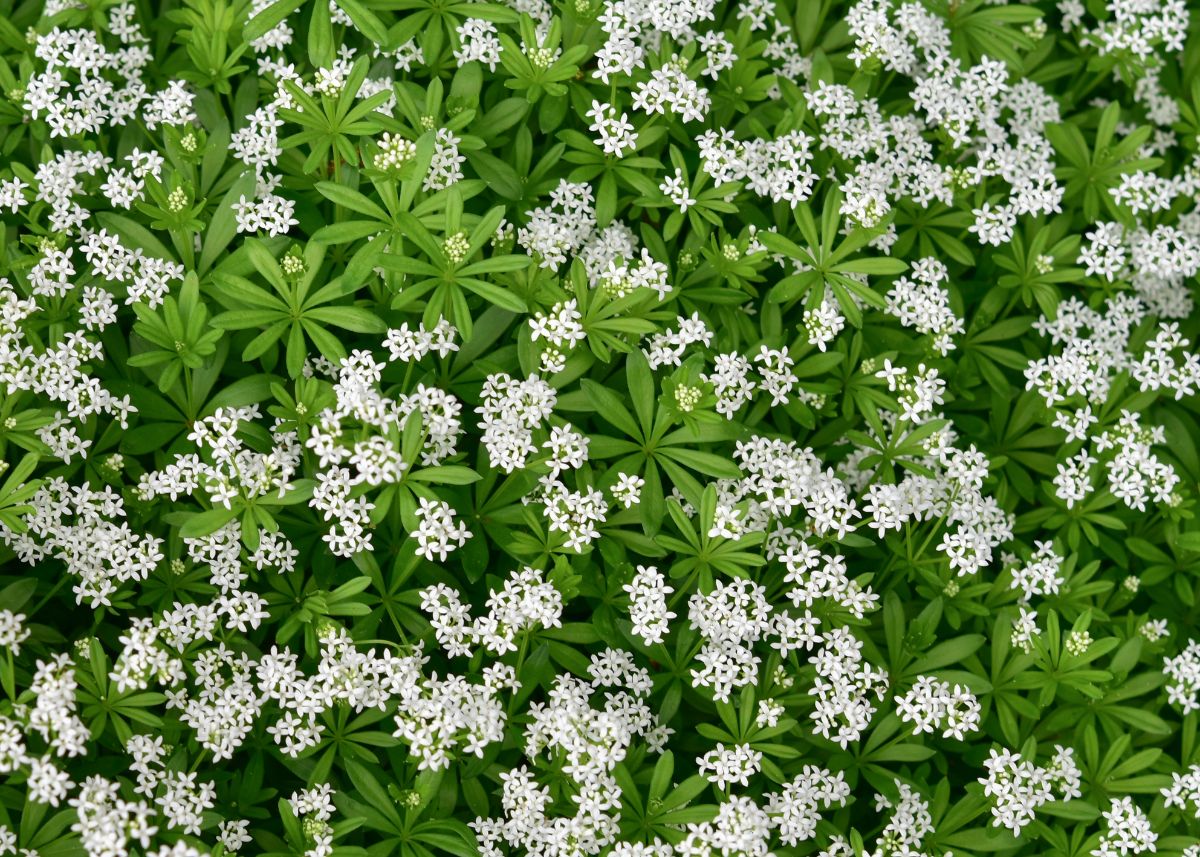
| Type: | Sweet woodruff |
| Sun or shade? | Shade |
| Drought tolerant? | Yes |
| Pollinator friendly? | Yes |
| Other benefits? | Fragrant flowers; dense growth naturally suppresses weeds; deer resistant. |
Also known as bedstraw, sweet woodruff is a mat-forming perennial groundcover. Ideal for shadier locations, sweet woodruff doesn’t need much maintenance and is drought-tolerant too. Fragrant, white, star-shaped flowers bloom from late spring to summer and look especially pretty atop the plant’s bright green, whorled leaves.
5. Creeping thyme
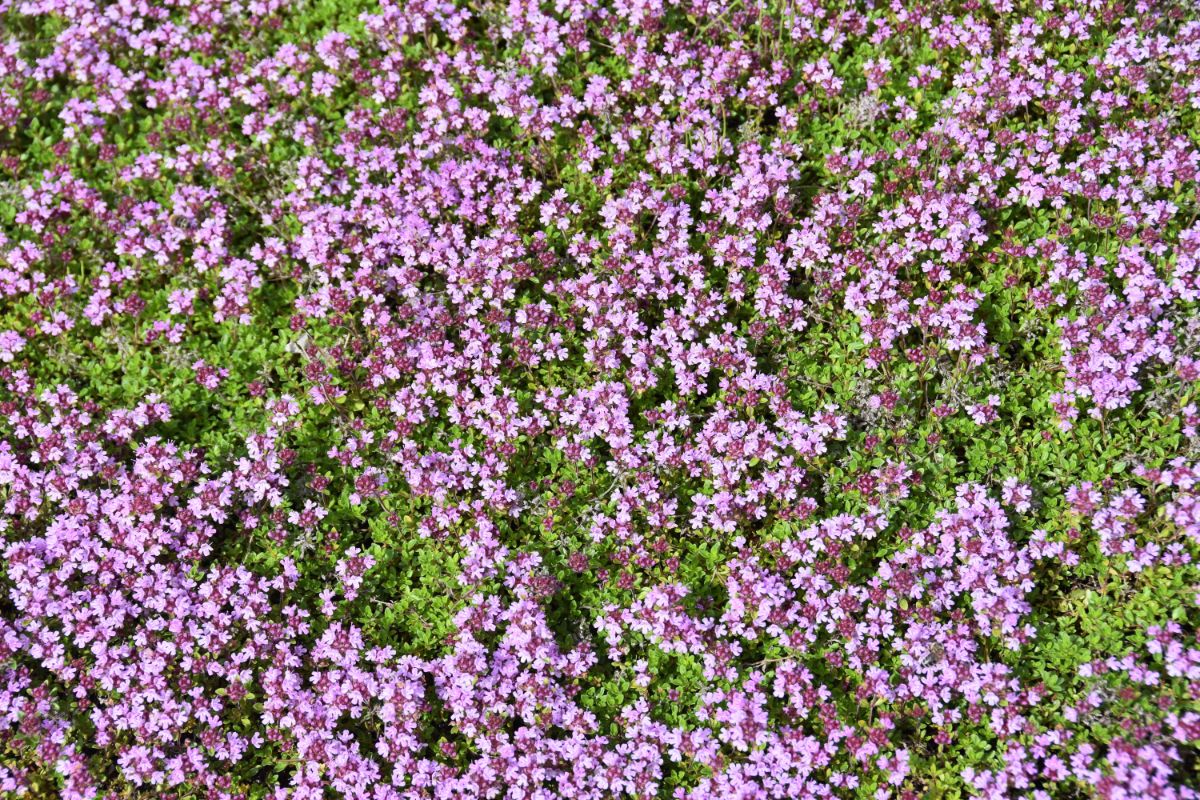
| Type: | Creeping thyme |
| Sun or shade? | Full sun to part shade |
| Drought tolerant? | Yes |
| Pollinator friendly? | Yes |
| Other benefits? | Fragrant leaves; dense growth naturally suppresses weeds; deer resistant. |
Another drought-tolerant groundcover, creeping thyme, grows lower to the ground than some of the other plants on this list. So, if you prefer a more traditional-looking, grass-like lawn, creeping thyme can create a similar look.
This low-maintenance plant has small, highly scented leaves that emit a gorgeous fragrance when crushed underfoot. Small flowers will also appear from late spring to early summer and are sure to brighten up your garden beds. Even better, creeping thyme has a slightly trailing growth habit, so it will naturally drape over rock walls or garden pathways.
6. Pachysandra
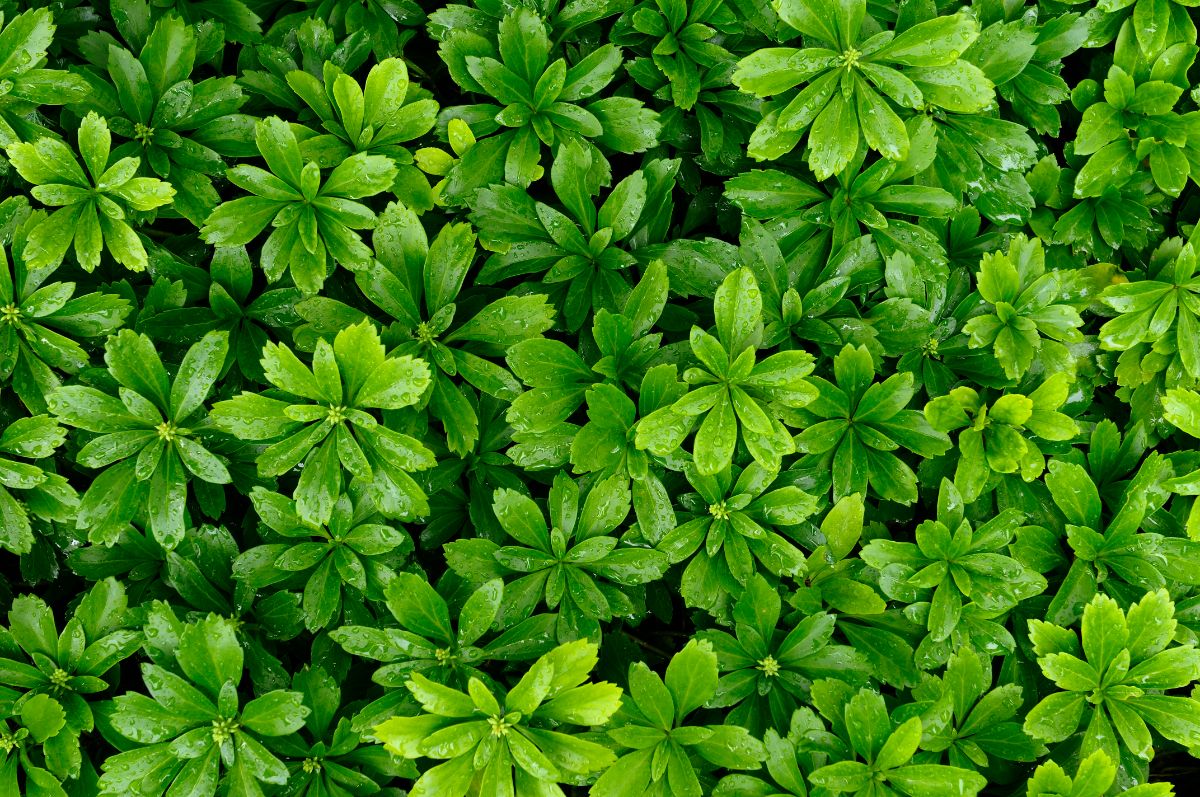
| Type: | Pachysandra |
| Sun or shade? | Shade |
| Drought tolerant? | Yes |
| Pollinator friendly? | Yes |
| Other benefits? | Dense growth naturally suppresses weeds; deer resistant. |
Pachysandra is an evergreen groundcover, so it will keep its beautiful, deep green hue all winter long. A relative of boxwoods, this plant grows rapidly via underground stems and is well-known for its ability to help resist erosion on sloping lawns.
Adapted to full to part shade, pachysandra doesn’t need much water, so you can put away your gardening hose. These plants will also bloom small and frothy white flowers in early spring.
7. Creeping Jenny
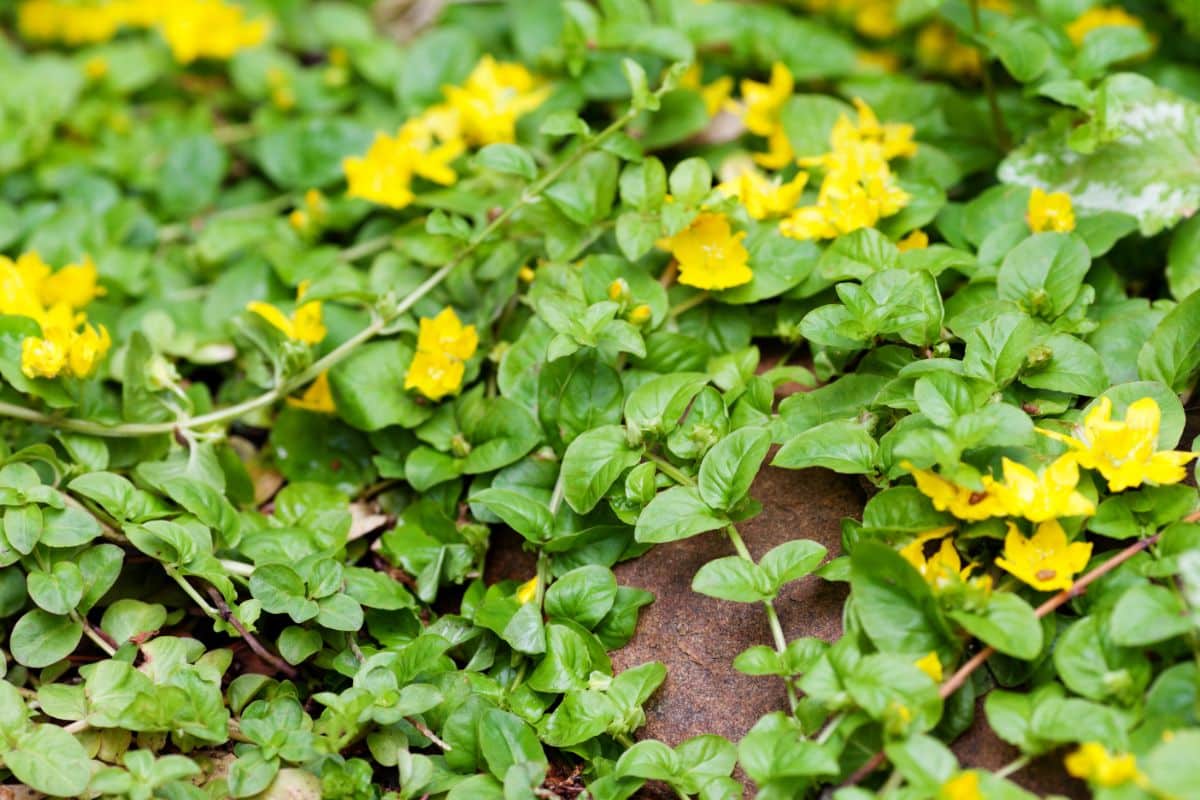
| Type: | Creeping Jenny |
| Sun or shade? | Full sun to part shade |
| Drought tolerant? | Yes |
| Pollinator friendly? | Yes |
| Other benefits? | Dense growth naturally suppresses weeds; deer resistant. |
A low-growing, spreading plant, creeping Jenny is mostly kept for its bright green foliage and trailing growth habit. Well-suited for sprawling over uneven terrains, creeping Jenny can tolerate some foot traffic, which is why it is often planted in garden walkways.
When properly maintained, creeping Jenny will also produce bright, golden-yellow blooms from early summer to fall.
8. Stonecrops
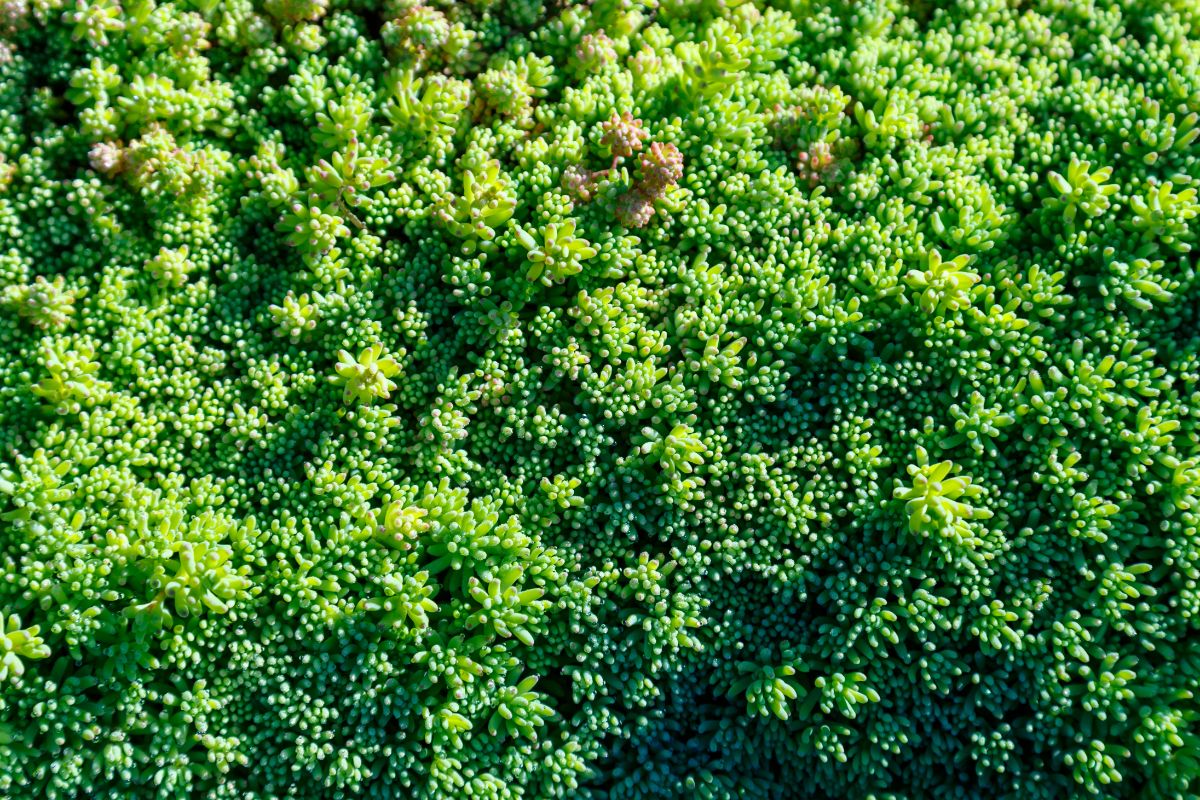
| Type: | Stonecrops |
| Sun or shade? | Sun |
| Drought tolerant? | Yes |
| Pollinator friendly? | Yes |
| Other benefits? | Autumn bloomers; ideal for rock gardens; most varieties are naturally deer resistant. |
Also known as sedum, stonecrops are drought-resistant succulents that make colorful lawn alternatives in drier climates. Famous for their ability to spread quickly, there are hundreds of different types of stonecrops, so you can choose the shapes and colors that will work perfectly for your space.
These plants also bloom in autumn for even more garden interest!
9. Corsican mint
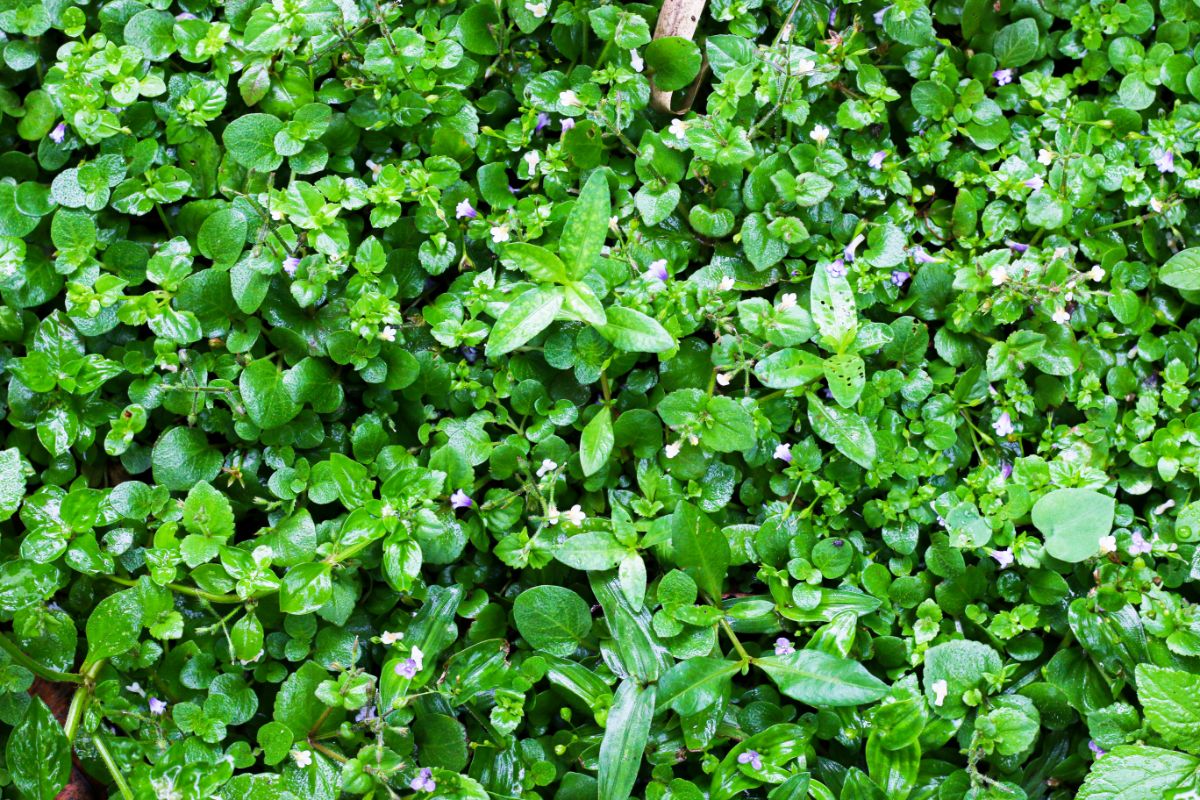
| Type: | Corsican mint |
| Sun or shade? | Sun |
| Drought tolerant? | No |
| Pollinator friendly? | Yes |
| Other benefits? | Pleasant fragrance; dense growth naturally suppresses weeds; deer resistant. |
Most gardeners know that mint can grow aggressively and easily overrun flower beds and vegetable gardens. But Corsican mint is a beautiful, low-growing groundcover that doesn’t grow as vigorously as other mint varieties. This makes it a great pick for an alternative lawn covering.
A pretty flowering plant, the Corsican mint boasts rounded leaves and small, pinkish-purple flowers that bloom throughout the summer. Growing best in moist and fertile soil, Corsican mint can tolerate full sun to part shade. Just keep in mind this lawn alternative is best suited for areas with minimal activity, as too much foot traffic can impact growth.
10. Moss
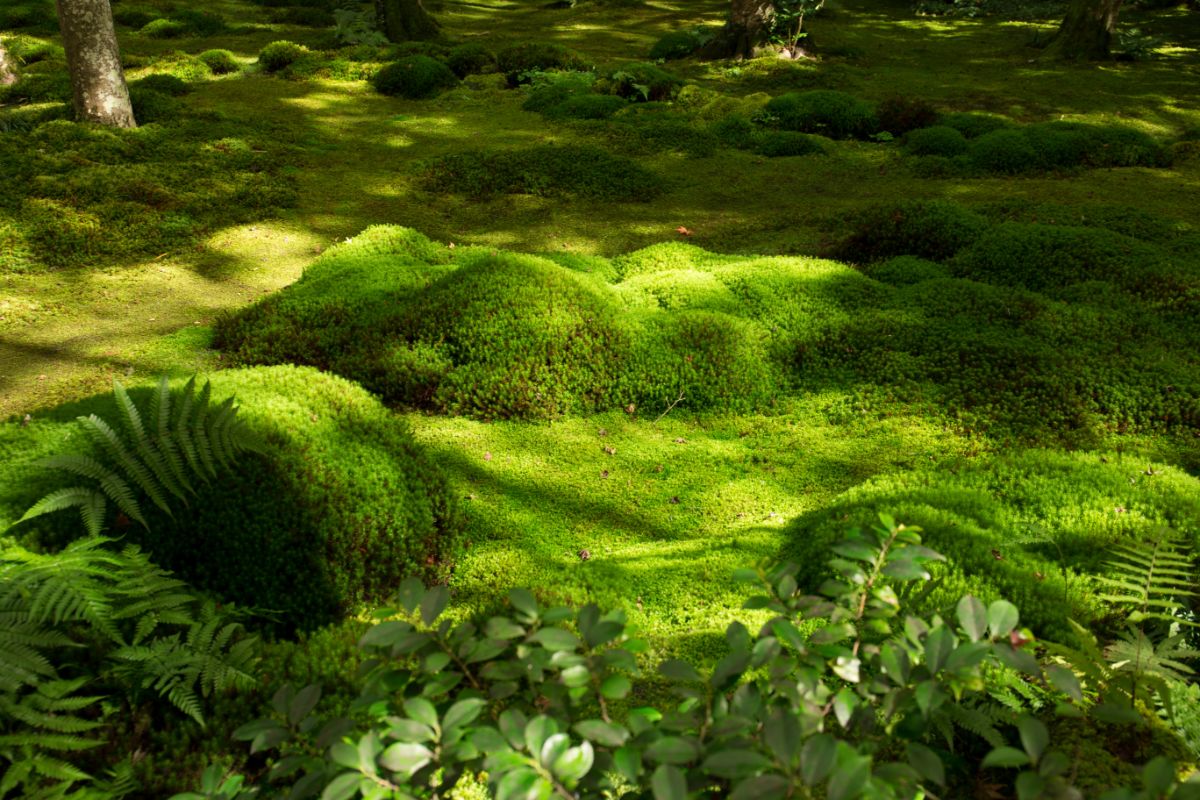
| Type: | Moss |
| Sun or shade? | Shade |
| Drought tolerant? | No |
| Pollinator friendly? | Some birds will use mosses for nest building. |
| Other benefits? | Very soft under foot; dense growth naturally suppresses weeds. |
Many people don’t think about using moss as a lawn alternative, but moss lawns are incredibly beautiful and vividly colored. They are also ultra-low maintenance, so if you hate cutting grass, consider planting moss instead.
Many species of moss are evergreen, retaining their color all year long for a fresher-looking landscape. Moss can also thrive in a variety of different soils, and they’re generally resistant to most pests. Moss lawns also require no mowing, and their dense growth can suppress weeds too.
When it comes to planting a moss lawn, you can select different types of mosses depending on your goals and aesthetics. Acrocarpous mosses, for example, grow in mounding clumps, while pleurocarpous mosses produce a thicker and flatter carpet-like look. Mosses also come in different shades of green, so you can choose to mix and match different species for a very unique and playful design.
11. Native perennials
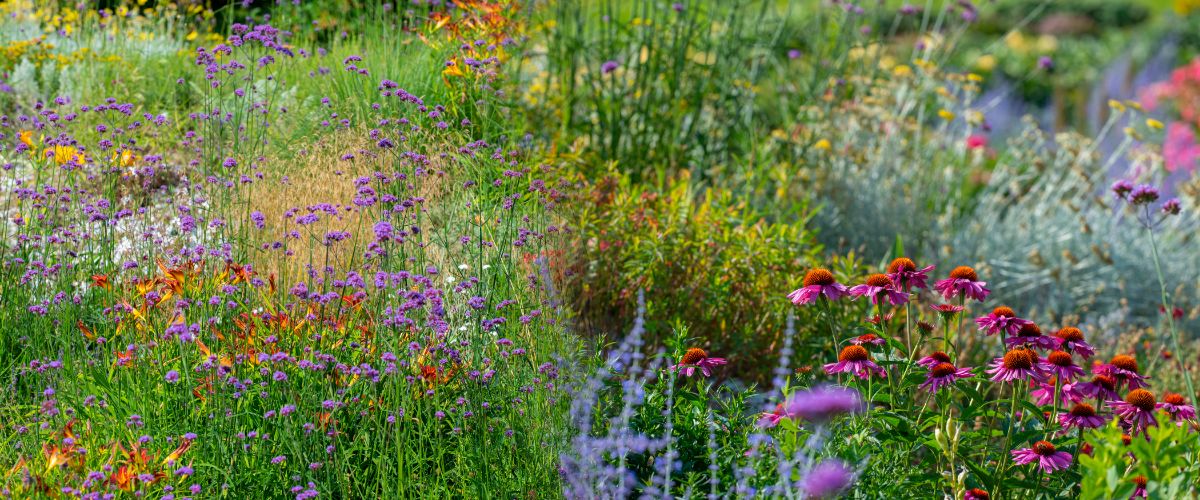
| Type: | Native perennials |
| Sun or shade? | Depends on variety |
| Drought tolerant? | Depends on variety |
| Pollinator friendly? | Yes |
| Other benefits? | Great for cut flower arrangements. |
With pollinator populations on the decline, more and more gardeners are learning how to maximize their gardening space to help out bees and other pollinators. Turf grass lawns offer little to no benefit for these industrious insects; however, replacing your lawn with native perennial beds can easily create a habitat that pollinators can’t resist.
Depending on your goals and your budget, you don’t need to convert your entire lawn to perennial beds at once. You can simply extend beds little by little until you’ve replaced much of your existing lawn, leaving pathways between your beds for gardening chores. Designing your backyard in this manner will naturally reduce the amount of mowing you need to do, and since native plants are well-adapted to your climate, they often need minimal to no extra water!
Choosing the right native plants for your growing zone can be tricky, but the Xerces Society compiled a helpful list of plants to try based on different growing zones. You can also sow drought-tolerant pollinator favorites like purple coneflower, yarrow, and milkweed.
For an even more low maintenance option, you can sow wildflower seeds in barren sections of your lawn or pull up your existing turf grass and sprinkle some wildflower seeds in its place. Once established, wildflower patches can be allowed to grow quite wild and don’t need much additional care. Just mow over the patch once a year to keep it from getting overrun by brambles or woodier plants.
12. Ornamental grasses
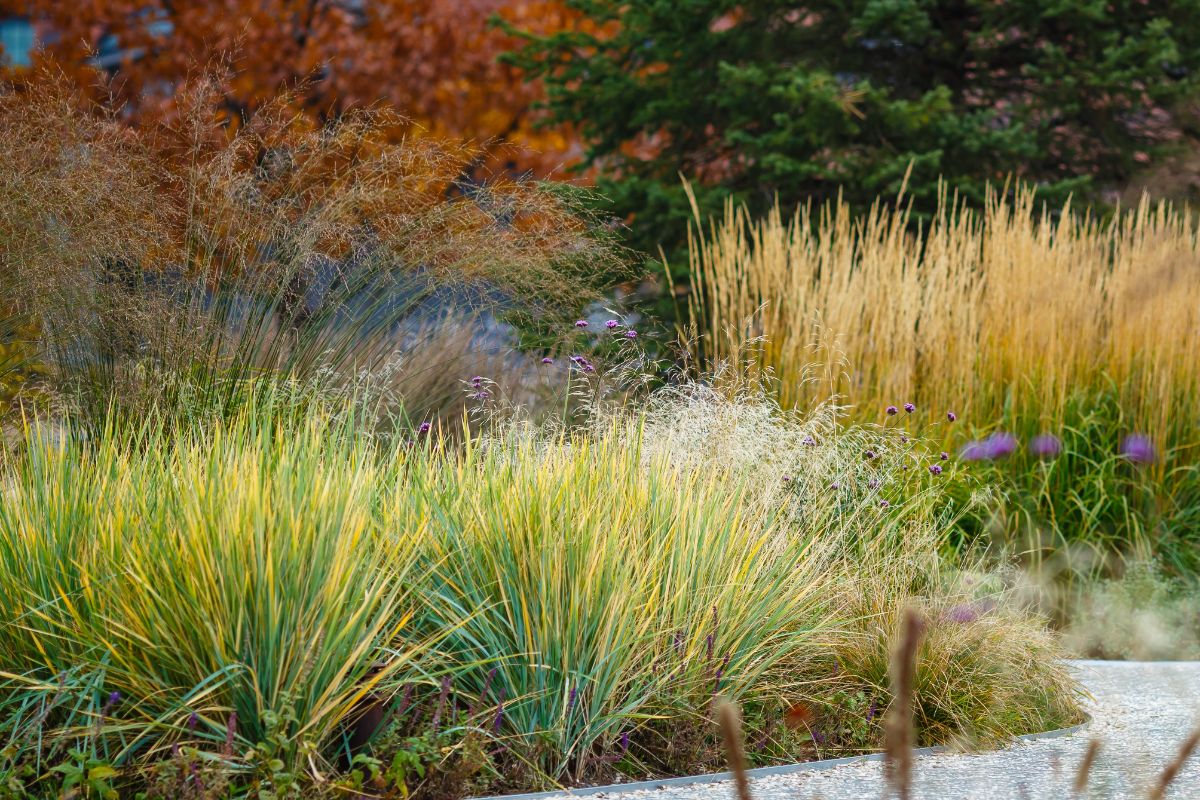
| Type: | Ornamental grasses |
| Sun or shade? | Sun |
| Drought tolerant? | Moderate watering needs |
| Pollinator friendly? | Wild birds will eat seeds and use grasses for nest building. |
| Other benefits? | Year-round privacy; most species are naturally deer resistant. |
If you’re tired of plain turf grass, ornamental grasses can be a wonderful alternative. These easygoing plants come in many different colors, shapes, and sizes, so you can play around with your landscape design to create just the look you’re going for.
Unlike regular grass, ornamental grasses require very little maintenance and don’t need to be mowed. Most varieties form clumps and aren’t prone to spreading, so you don’t need to worry about them taking over. Even better, many ornamental grasses are naturally resistant to many pests and diseases, require no fertilizer, and they’re drought tolerant too.
Ornamental grasses can create lots of texture and movement in your garden, especially when the breeze blows through their stems and fluffy seed heads. And, in winter, these grasses usually retain a good deal of color and provide year-round privacy too!
13. Rock gardens
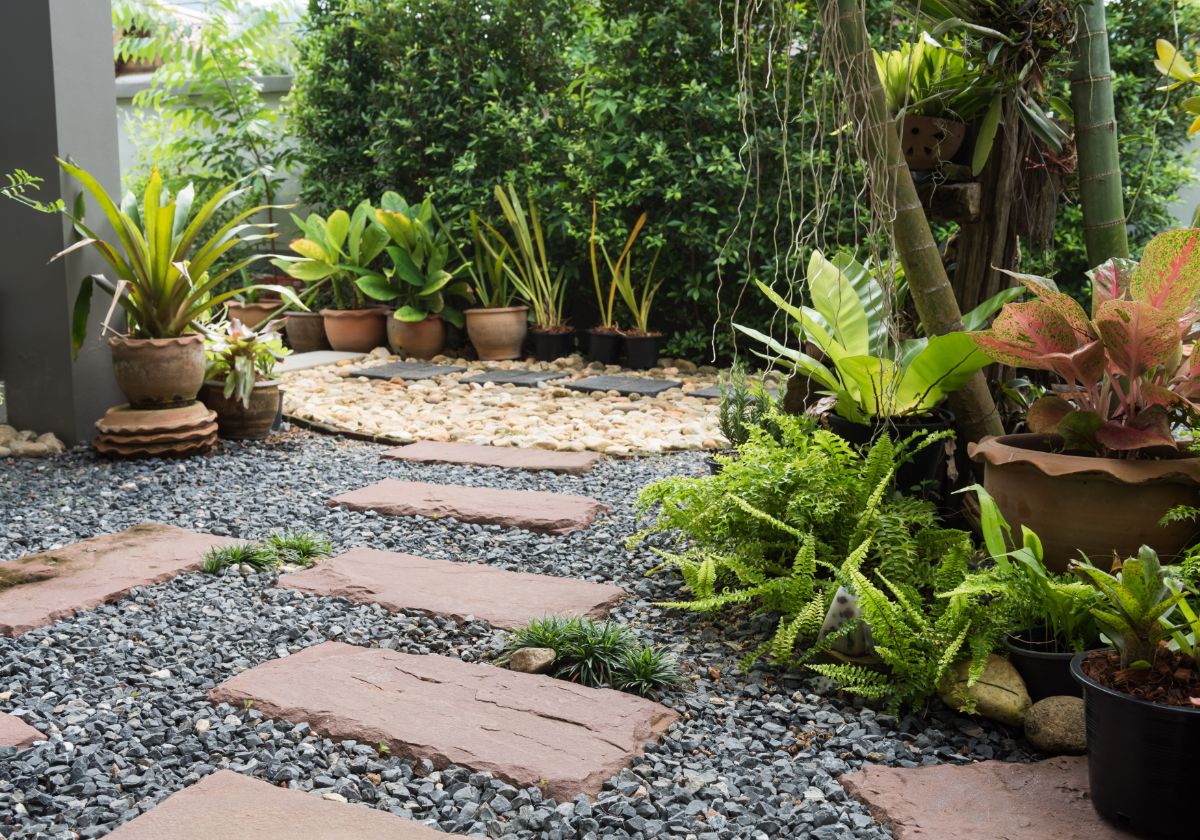
| Type: | Rock gardens |
| Sun or shade? | Both |
| Drought tolerant? | Yes |
| Pollinator friendly? | No |
| Other benefits? | Extremely drought tolerant and low maintenance. |
For a truly low-maintenance lawn, rock gardens are the way to go. Depending on the look you’re going for, you can choose to interplant specimen plants and trees in your rock garden or only use rocks. It’s up to you.
For a base, you can spread out pea gravel or other gravel varieties, using a solid color or contrasting different toned stones to create swirls, geometric patterns, and other creative shapes. Installing a few eye-catching larger rocks or boulders is another way to add flair and texture to your rock garden. And, of course, a granite bench or stone fountain would look nice too!
Rock gardens are particularly well-suited for drought-prone areas where rainfall is minimal. Maintaining a grass lawn in such places can be difficult and costly; however, rock gardens require no watering whatsoever. If you do want to keep plants in drier climates, adding a few succulents, like sedum, to your rock garden can bring in some color without increasing your garden’s watering needs.
And, as an added bonus, weeding is usually quite easy in rock gardens. If you aren’t growing any ornamental plants, you can simply knock out any weeds that pop up with a weeding torch or a few well-placed sprays of horticultural vinegar.
14. Vegetables
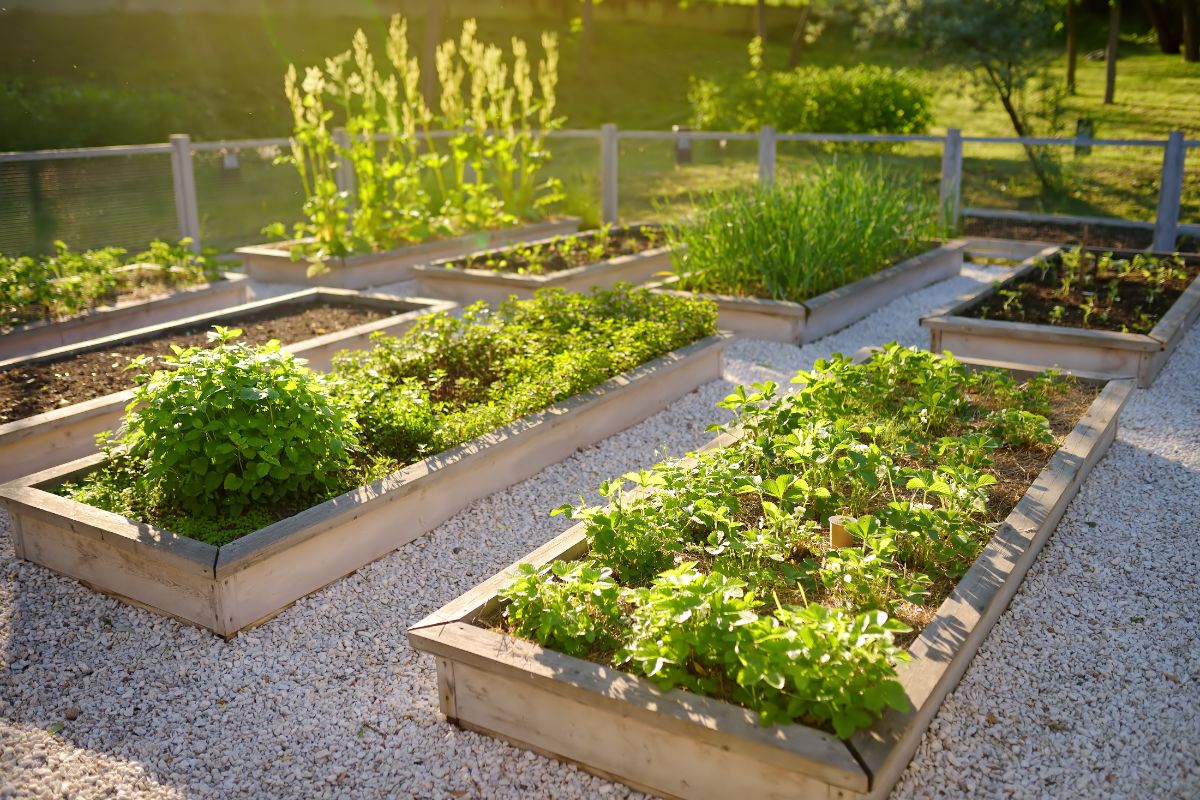
| Type: | Vegetables |
| Sun or shade? | Sun |
| Drought tolerant? | No |
| Pollinator friendly? | Depends on plant varieties |
| Other benefits? | Edible produce. |
In today’s society, many gardeners are trying to find innovative ways to maximize their gardening space. And, with grocery prices on the rise, one of the smartest ways to get the most out of your lawn is to replace your plain grass with beds bursting with homegrown veggies and fruit.
If you live in an apartment or HOA, you may not be able to swap out your traditional lawn for a raised bed of vegetables. However, if you can replace some of your grass lawn with a vegetable bed or two, you’ll be surprised how much produce you can grow even in a small garden space.
Gone are the days of struggling with the lawnmower. Instead, dust off your gardening gloves and get ready to pull up succulent carrots, luscious lettuces, and tons of other tasty veggies.
For small garden spaces, stay away from big vegetable types that are heavy feeders and that have a tendency to spread, like corn and pumpkins. Instead, look for more compact vegetable plants, like lettuces, root vegetables, and tomatoes. You’ll be able to grow more of these plants in even the smallest backyard space, and you won’t miss your grass lawn one bit!
Frequently asked questions
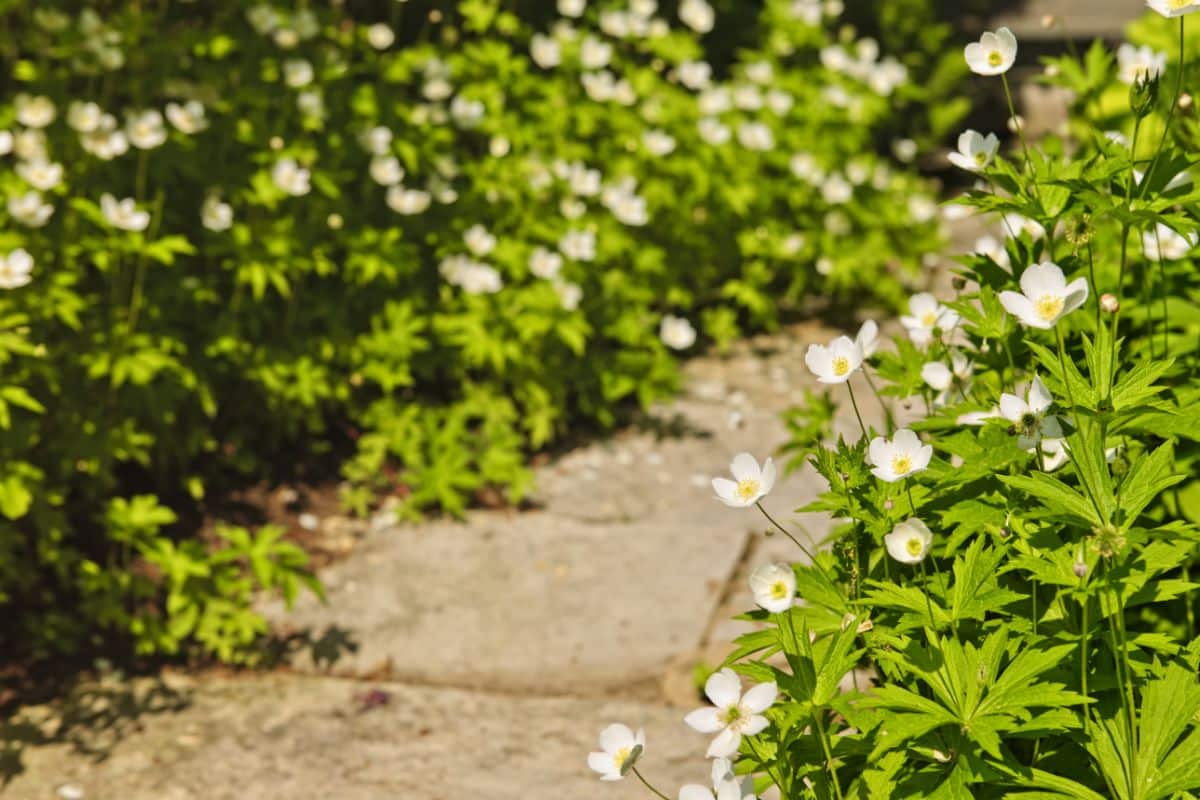
Any lawn covering that requires less water, pesticides and fertilizers is naturally a more sustainable option than grass. Because they require less maintenance and resources, clover lawns, rock gardens, and many drought-tolerant groundcovers are all better for the environment than grass lawns.
Matrix Turf and several other artificial turf companies make eco-friendly lawn covering using non-toxic materials and sustainable practices. Once installed, these faux turfs don’t need water, pesticides, or herbicides to maintain their appearance.
Swapping out your grass lawn with more sustainable options, like clover, is one way to reduce your environmental impact. But if you want to keep your grass lawn, try reducing watering as much as you can, swap out fertilizers for organic compost and use organic weeding and pest control options as much as you can.
The first step to creating a rock garden is removing your grass. Once your grass is gone, rake the area flat and then cover it with a weed barrier fabric or layers of moistened newspaper to suppress weeds. Then just cover the weed barrier with your rocks!
Yes, clover lawns are much more sustainable than grass. Clover doesn’t need nearly as much water, and its dense growth makes it naturally able to resist weeds and pests. Even better, clover enriches the soil, so you won’t need to use any synthetic fertilizers either.
Smothering your grass is the easiest removal method. Although your tactics may vary, covering your grass with tarps, black plastic, or layers of cardboard for about a month will kill off most of your grass and help prepare your lawn for reseeding with clover or any other lawn covering of your choosing.
Summary

Once, turf grass lawns were considered to be status symbols. But, in recent years, with the increased interest in sustainability and earth consciousness, more gardeners have been replacing their grass lawns with more eco-friendly options.
Alternate lawns aren’t just beautiful. They can create wildlife habitats, reduce your lawn maintenance, conserve water and eliminate the need for synthetic fertilizers and chemical pesticides, and herbicides. What’s more, these creative lawn coverings can maximize your outdoor space and provide more room for flowers, veggies, and other useful crops.
We hope this article has inspired you to consider swapping out your grass lawn for a more sustainable yard. For more environmentally friendly lawn choices, read up on our guide for transforming your backyard into a thriving pollinator habitat.

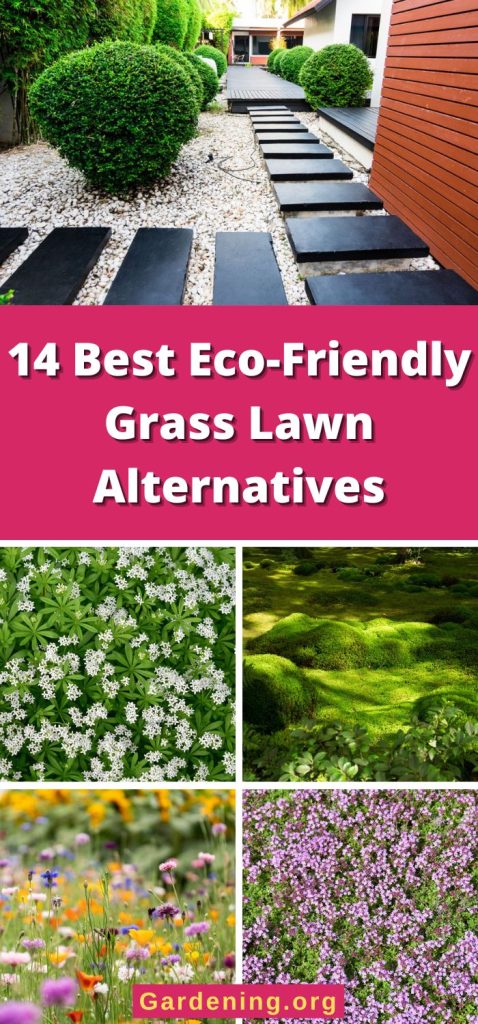
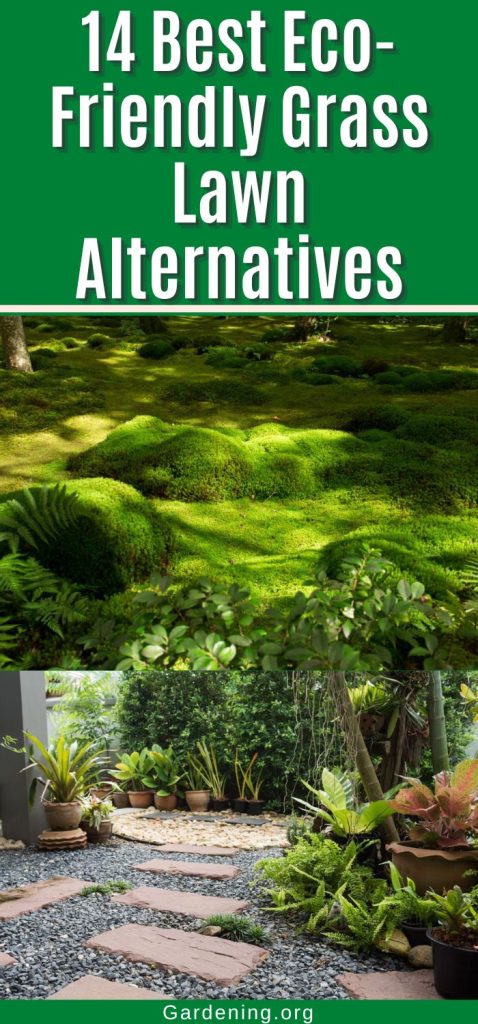
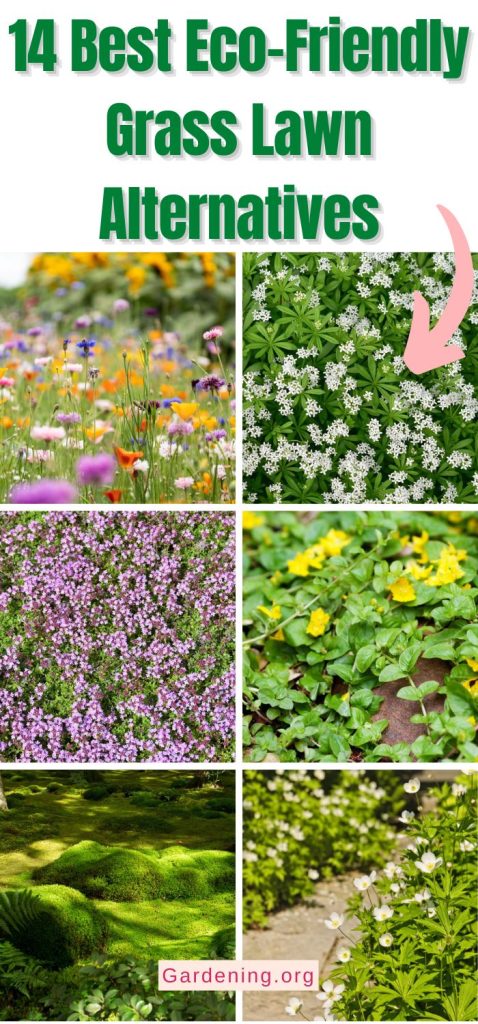
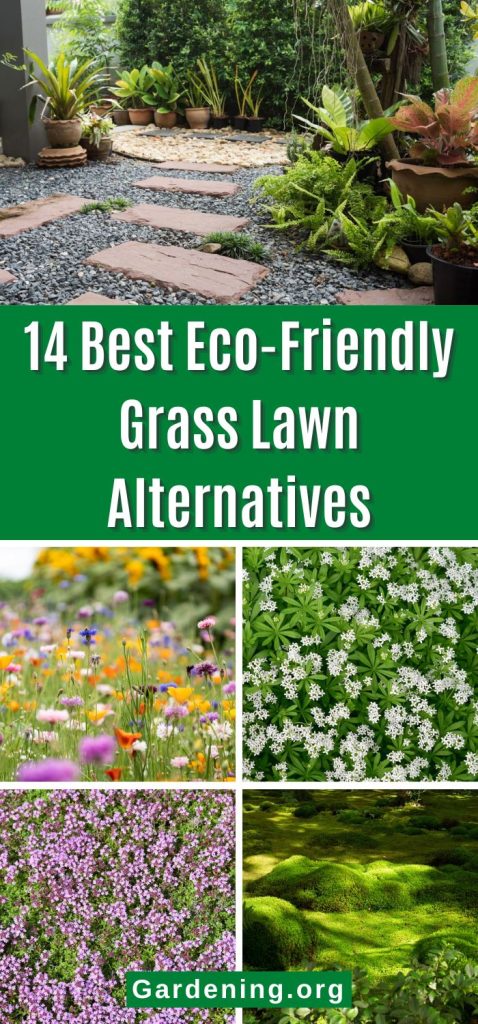

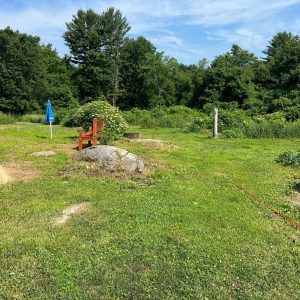

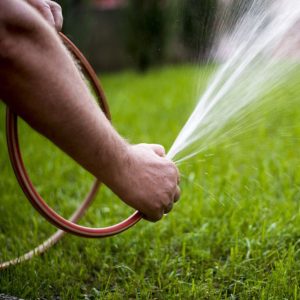
Leave a Reply